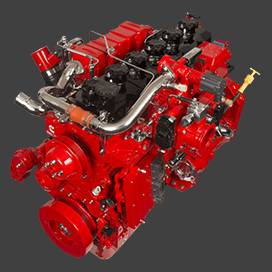Oct . 17, 2024 19:56 Back to list
How to Resolve Issues with a Stuck Emergency Brake Drum
Understanding Stuck Brake Drums Causes, Symptoms, and Solutions
When it comes to vehicle maintenance, the brake system is one of the most critical components that ensure safety on the road. Among the various elements of this system, the brake drum plays a crucial role in the operation of drum brakes, which are commonly found on many vehicles. However, issues can arise, and one of the more problematic situations is when a brake drum becomes stuck. Understanding the causes, symptoms, and potential solutions to this issue is essential for vehicle owners.
What Are Brake Drums?
Before diving into the specifics of a stuck brake drum, it is essential to understand what brake drums are. Brake drums are cylindrical components that house the brake shoes, which press against the inner surface of the drum to create friction and ultimately slow down or stop the vehicle. They are typically found in older vehicles and some modern designs, particularly in the rear brakes. The functionality relies on hydraulic pressure from the brake system, which actuates the brake shoes against the drum.
Causes of a Stuck Brake Drum
Several factors can contribute to a brake drum becoming stuck. Here are some of the most common causes
1. Corrosion and Rust Over time, moisture can accumulate on the brake drum, leading to rust formation. This is especially common in regions with high humidity or where road salt is used during winter months. Rust can bond the drum to the hub, making it difficult to remove.
2. Brake Shoe Adhesion If the brake shoes stick to the drum due to contamination from brake fluid or oil, it can prevent the drum from being readily removed. This adherence can be exacerbated by heat generated during braking.
3. Improper Adjustment If the brake system is not correctly adjusted, the shoes may remain in contact with the drum longer than necessary, leading to wear or gluing together over time.
4. Mechanical Failure Sometimes, components within the brake assembly, such as springs or hardware, may fail. This failure can result in the shoes not retracting as they should, leading to sticking issues.
5. Temperature Changes Extreme temperature variations can cause materials to expand and contract. This thermal expansion can contribute to a mismatch in fit between the drum and the hub, making separation difficult.
Symptoms of a Stuck Brake Drum
Recognizing the signs of a stuck brake drum is crucial for addressing the issue before it leads to more significant problems
. Common symptoms includestuck e brake drum

- Difficulty in Driving If one or more drums are stuck, you may notice a significant reduction in braking efficiency, resulting in a longer stopping distance or unstable braking.
- Unusual Noises Grinding or scraping noises can indicate that the brake shoes are not functioning correctly, potentially due to a stuck drum.
- Burning Smell Excessive heat from prolonged contact between the drum and shoes can create a burning odor, signaling overheating and potential damage to the braking system.
- Visual Inspection In some cases, a visual inspection may reveal rust or corrosion around the drum or signs of unusual wear on the brake shoes.
Solutions for a Stuck Brake Drum
If you suspect a stuck brake drum, it is important to address it promptly. Here are some solutions
1. Inspect and Lubricate Begin with a thorough inspection. Clean the drum and the brake assembly, ensuring there is no rust or debris. Applying a suitable lubricant to the backing plate and drum can help alleviate sticking.
2. Use a Drum Puller In cases where the drum remains stubbornly attached, a specialized tool called a drum puller may be necessary. This tool applies even pressure, allowing the drum to break free without causing damage.
3. Replace Components If the brake shoes are severely worn or damaged, replacing them may be necessary. Along with rusted drums, this could prevent further sticking issues.
4. Seek Professional Help If the problem persists, or if you're uncomfortable performing these tasks, it may be best to seek help from a professional mechanic. They can diagnose and resolve the issue effectively.
Conclusion
A stuck brake drum can cause significant safety issues and affect vehicle performance. Regular maintenance checks and addressing any signs of trouble early on can help mitigate these problems. By understanding the causes and solutions, vehicle owners can ensure that their braking system remains efficient and safe.
-
Durable Brake Drum MAZ for Heavy Duty Trucks | High Performance
NewsAug.26,2025
-
FUWA: Premium Quality, Reliable Performance & Innovative Solutions
NewsAug.25,2025
-
Liza Brake Drum: Superior Quality & Performance for Safe Driving
NewsAug.24,2025
-
Iveco Brake Drum | Premium OE Quality for Daily & Eurocargo
NewsAug.22,2025
-
Your Brake Drum Man: Quality & Performance Parts
NewsAug.21,2025
-
Explore Japan: Ultimate Travel Guide & Authentic Experiences
NewsAug.19,2025
